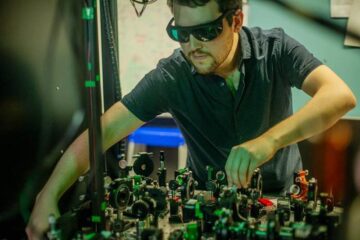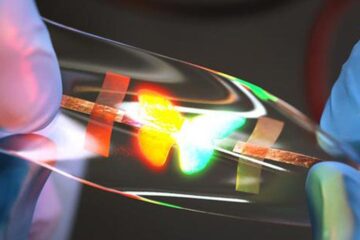Zinc's role in the brain

Zinc plays a critical role in regulating how neurons communicate with one another, and could affect how memories form and how we learn. The new research, in the current issue of Neuron, was authored by Xiao-an Zhang, now a chemistry professor at the University of Toronto Scarborough (UTSC), and colleagues at MIT and Duke University.
Researchers have been trying to pin down the role of zinc in the brain for more than fifty years, ever since scientists found high concentrations of the chemical in synaptic vesicles, a portion of the neuron that stores neurotransmitters. But it was hard to determine just what zinc's function was.
In the new work, the researchers designed a chemical called ZX1 that would bind with zinc rapidly after it was released from the vesicles but before it could complete its journey across the synapse. Using the chemical, they were able to observe how neurons behaved when deprived of zinc.
“As a chemist, I'm proud that I can make a contribution to neuroscience,” says Zhang, who helped design the chemical while conducting postdoctoral research in Stephen J. Lippard's lab at MIT. He was joint first author of the paper, along with Enhui Pan from James O. McNamara's group at Duke University.
The researchers studied neurons in a brain region called the hippocampus, which is associated with learning and memory formation. They found that removing zinc interfered with a process called long-term potentiation . Long-term potentiation strengthens the connection between two neurons, and seems to be important for memory and learning.
Zhang is currently working on developing new contrast agents that could be used in medical imaging.
Media Contact
More Information:
http://www.utoronto.caAll latest news from the category: Health and Medicine
This subject area encompasses research and studies in the field of human medicine.
Among the wide-ranging list of topics covered here are anesthesiology, anatomy, surgery, human genetics, hygiene and environmental medicine, internal medicine, neurology, pharmacology, physiology, urology and dental medicine.
Newest articles

Combatting disruptive ‘noise’ in quantum communication
In a significant milestone for quantum communication technology, an experiment has demonstrated how networks can be leveraged to combat disruptive ‘noise’ in quantum communications. The international effort led by researchers…

Stretchable quantum dot display
Intrinsically stretchable quantum dot-based light-emitting diodes achieved record-breaking performance. A team of South Korean scientists led by Professor KIM Dae-Hyeong of the Center for Nanoparticle Research within the Institute for…

Internet can achieve quantum speed with light saved as sound
Researchers at the University of Copenhagen’s Niels Bohr Institute have developed a new way to create quantum memory: A small drum can store data sent with light in its sonic…





















